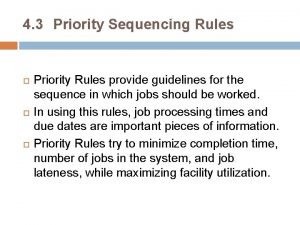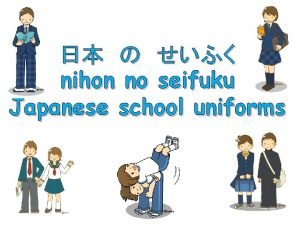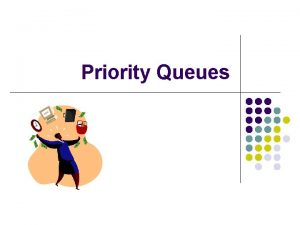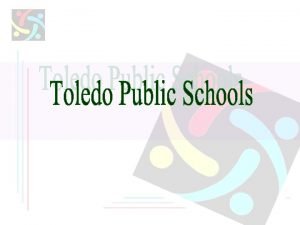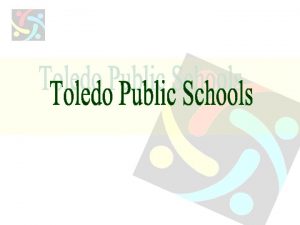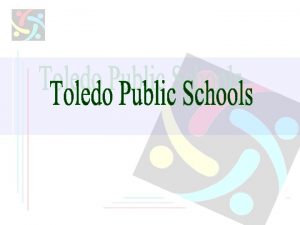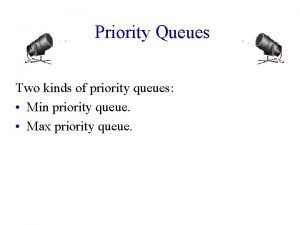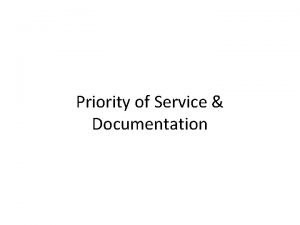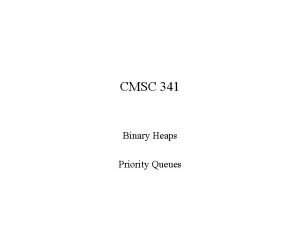Primary Priority KEEPING STANLEY ELEMENTARY From the Stanley















- Slides: 15

Primary Priority KEEPING STANLEY ELEMENTARY

From the Stanley Elementary PSSC On behalf of the Stanley Elementary PSSC we wish to express our concern over the proposed amalgamation of Stanley Elementary School and Stanley High School. The following presentation will explain some of the reasons we would propose to maintain the status quo and not move the amalgamation forward.

The Role of the DEC One of the main roles of the DEC (District Education Council) Member is to ensure the wishes of the community are reflected in the management and operation of the community’s schools. DEC members must be wiling to ask the community what it needs and wants from its schools. An effective DEC member considers the wishes of all parents, students and community members. Taken from the District Education Council Website

Loss of Autonomy - Losing Our Independence – Our Brand Stanley Elementary was built in 1965 as a separate independent school and has an important place in our community. In 1992 the elementary and high schools were joined with a corridor between them and a shared cafeteria but functioned as two separate schools. At no time did parents nor the community ask to amalgamate the two schools into one entity.

Why Do Parents Choose Stanley Elementary? When parents are considering a school for their child/children, many say they prefer a small school where the staff have a close relationship with each student. This has been a major factor in choosing a community to live in. The proposed amalgamation would mean that some parents may not choose to send their children to an amalgamated school which would mean a decrease in enrollment which in turn means lower FTE’s (Full-time Teaching Equivalents)

Stanley Elementary School Culture The children at Stanley Elementary know each teacher and the principal and feel comfortable in approaching them. The principal is a teaching principal as well, which allows her to get to know each student as an individual. If the proposed amalgamation goes through this close relationship will not be possible because the principal most likely not be a teaching principal. He/She will be responsible for the middle and high schools as well as the elementary school leaving less time for relationship building.

Student Connectivity A sense of school connectedness can support students in making healthy choices. Students who feel an attachment to their school, and who consider their teachers to be supportive, are less likely to engage in unhealthy or high-risk behavior. In the recent School Wellness survey our level of school connectedness averaged 94%. 91% feel close to the people at their school; 93% feel a part of the school 91% are happy to be at school 94% feel the teachers treat them fairly 96% feel safe at Stanley Elementary These scores are above the New Brunswick average in every category and we want to keep our children connected to their school.

One Office – One Administration We are concerned that with one principal, the principal’s time will be more concentrated on the social issues of the middle and high schools which will leave the elementary as a lower priority. We are also concerned about elementary children being in the same administration office as the middle and high school. This is not only a safety issue but a very intimidating situation for a younger child. We prefer not to have our elementary students sharing an office where they are looking at the actions and behaviors of the older adolescents.

Bullying Issues We are concerned that there would be increased contact with elementary and the middle/high school children which would lead to an increase in bullying situations. We are also concerned about the elementary children being exposed to social situations that affect the middle and high schools such as: inappropriate language, drug use, alcohol use, sexual harassment, etc. In the 2013 -2014 Wellness Survey, only 20% of students indicated bullying to be an issue at their school compared to 41% of students across New Brunswick. Currently the vast majority of our students feel comfortable (91%) approaching their teacher or administrator when a bullying issues arises. Can you ensure this will continue if amalgamation goes forward?

Elementary Student’s Needs There is a difference in the instructional hours between the elementary and high schools and there is a significant difference in the length of class time. It becomes complicated to schedule shared specialists at both levels when class times don’t coincide. Also, the time required of Administrators to serve and meet the needs of adolescents is both daunting and demanding. With the proposed amalgamation who will ensure that the elementary students needs, issues and concerns are being met?

Communication Issues We are concerned that there will be issues around communications between school and home with respect to changes in transportation arrangements, after-school activities and caregivers, late arrivals, and school closures due to the loss of administrative positions.

Student’s Leadership Skills The children in grades 4 and 5 would lose their chance to gain leadership/mentoring skills at a young age. These children currently are the “big kids” at the school and the younger children look up to them. The Elementary Staff offer programs and clubs that build leadership skills such as House League, Environmental Club and Hackmatack. Older students help teachers by taking leadership roles in assisting younger students as they move through “stations during such events as Winter Carnival and Fun Days.

Loss of Programs due to increase demands on teachers Special events at the elementary school may be reduced due to the loss of staff and administration as a result of the proposed amalgamation. Increased demands on school staff would mean there wouldn’t be anyone to coordinate Halloween/Valentine’s Day events, noon hour intramurals, drama and musical productions. After-school programs would also be at risk due to increased demands on teachers and school staff.

What is best for the children? Children are growing up too fast – exposed to things they don’t need to be – why would we want to speed up their growing process by introducing them to situations they don’t need to be involved in or witnessing (explicit language, actions, defiance, drama, fighting). There is a definite difference between the school culture, climate and/or atmosphere of an elementary school and a middle/high school. Let’s keep them children as long as possible.

Maintain the Status-Quo Parents nor the community asked for one shared administration office or for one shared principal. There is no need to spend taxpayers money relocating a central office for shared administration when the current state works well as it is. The District has stated that there would be a total annual cost savings of $53, 621 starting in year three. There are currently 248 students in both schools who go to school 185 days per year. This works out to $1. 17 cents per day per student savings. Would the District reduce services to our elementary school children and disrupt the learning environment in order to save $1. 17 per child per day? We ask that the District Education Council recommend the Status-Quo for Stanley Elementary School and Stanley High School.
 Burman's priority list gives priority to
Burman's priority list gives priority to Priority mail vs priority mail express
Priority mail vs priority mail express What is priority sequencing
What is priority sequencing Kindergarten japanese uniforms
Kindergarten japanese uniforms Quá trình desamine hóa có thể tạo ra
Quá trình desamine hóa có thể tạo ra Khi nào hổ mẹ dạy hổ con săn mồi
Khi nào hổ mẹ dạy hổ con săn mồi Thế nào là mạng điện lắp đặt kiểu nổi
Thế nào là mạng điện lắp đặt kiểu nổi Các châu lục và đại dương trên thế giới
Các châu lục và đại dương trên thế giới Các loại đột biến cấu trúc nhiễm sắc thể
Các loại đột biến cấu trúc nhiễm sắc thể Nguyên nhân của sự mỏi cơ sinh 8
Nguyên nhân của sự mỏi cơ sinh 8 Bổ thể
Bổ thể Phản ứng thế ankan
Phản ứng thế ankan Thiếu nhi thế giới liên hoan
Thiếu nhi thế giới liên hoan điện thế nghỉ
điện thế nghỉ Tia chieu sa te
Tia chieu sa te Chúa yêu trần thế
Chúa yêu trần thế


